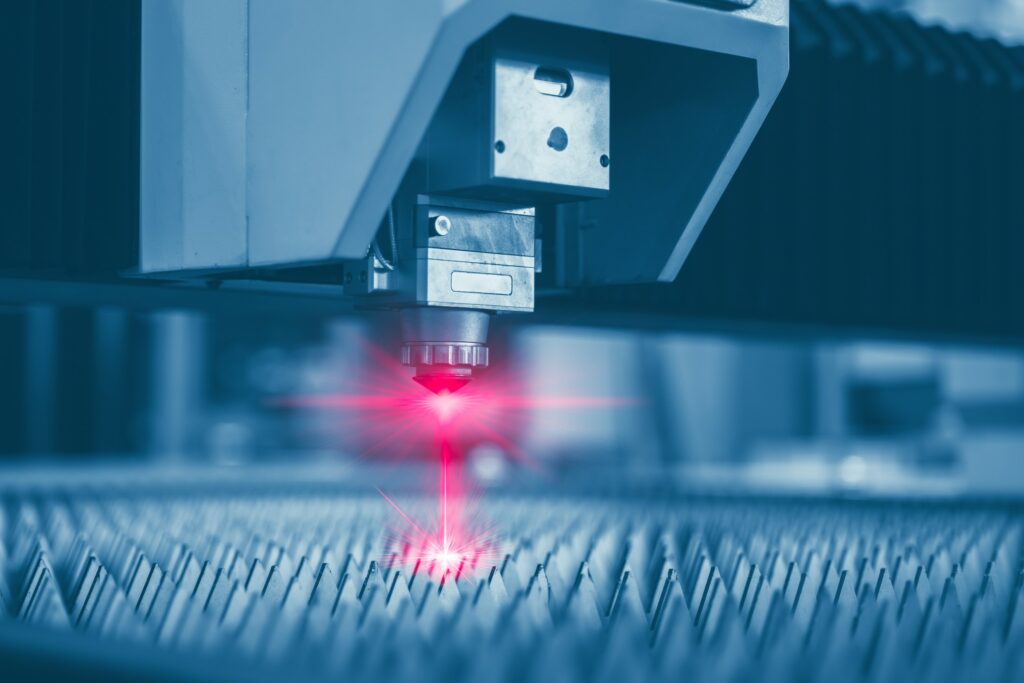CNC machining involves advanced technologies, programming software, and high-quality materials. Computerized tooling techniques also underpin countless industries, providing precision parts that satisfy ISO standards. Understanding the role CNC plays in the modern economy can help you innovate new products at lower costs.
CNC machining is a staple technology of manufacturing today. It plays a critical role in modern manufacturing, and though it is now an incredibly advanced technology, it still has much in common with traditional manufacturing methods. Many people don’t fully understand the process and how it works. This article will try to change that.
The basics are always the best place to start. You must also appreciate what machinists do and how they prepare for a project. All industries and parts require a different approach to CNC machining, whether for rapid prototyping or production.
What does CNC stand for, and why is it vital to the modern world? Is there a difference between machining and manufacturing? Find your answers here.
Table of Contents
The Benefits of CNC Machining for In-Demand Industries
The 7 Most Common Materials in CNC Machining + Use Cases
The CNC Machining Process: Step-By-Step
Step One: Develop a Design Concept
Step Three: Program the Computer
What’s the Difference Between CNC Machining and Manufacturing?
What Is CNC Machining?
CNC stands for computer numerical control. It is a machining process that uses computer-controlled machines to cut parts from blocks of material. The process also enables machinists to create complex parts with computer-aided programs such as CAD and CAM.
The CNC machine can process various raw materials and workpieces to manufacture simple or complex geometries. Programmers code the software to follow instructions, and the machines can run with or without a manual operator depending on the part and the setup. CNC machining uses a series of drills and cutters to work the material and cut out the desired shape.
How Does CNC Machining Work?
This sophisticated metal fabrication and manufacturing method cleverly combine technology and physical science. Machinists input data into the CNC software, translating the information into what is known as G-code. The G-code controls the machines and helps operators render 3D parts for prototyping or production.
Heavy-duty CNC machines allow operators, engineers, and product designers to create parts and components for various applications. Usually, those components are impossible to make with manual labor and difficult via other processes. Instead, machinists feed prompts into the computer to produce three-dimensional parts or assemblies.
Experts choose the best processes, tools, and machines for a job based on project requirements. The programmed machines then remove, cut away, and shape materials through carefully planned steps. Meanwhile, operators often repeat processes to create precise angles, finish metals, or develop complicated designs through milling, drilling, turning, or otherwise.
DID YOU KNOW: Most CNC machine shops operate under strict ISO guidelines to support global trade.

We offer fast, high-quality, tailored PROTOTYPING solutions for leading companies in a wide range of industries.
superior Rapid PROTOTYPING
The Benefits of CNC Machining for In-Demand Industries
Industry leaders view CNC machining as a vital aspect of the modern economy. Various processes create critical components of our everyday lives. Imagine an airport without airplanes or a highway without cars. That’s how the world would look without precision machining.
Recent technological advances in metal fabrication and manufacturing have paved the way for groundbreaking innovation. Yesterday’s back-breaking labor is now completed with sophisticated machinery in a clean and safe setting. CNC services also give industries access to cutting-edge processes with cost-effective solutions that help them stay competitive.
These three high tech industries are excellent examples:
Automotive
Automobile manufacturers rely on quality CNC work to develop and manufacture quality automotive parts. This industry is highly regulated, with little room for error. Thus, CNC machined components are used as they are consistent enough for practical applications and public safety regulations.
Aerospace
Aerospace manufacturers face similar issues when fabricating materials for high-precision projects. However, CNC services provide the repeatability and efficiency required for competitive industries. It also helps engineers improve various aspects or troubleshoot design flaws.
Medical
The medical industry needs precise parts for countless reasons, and many of them are critical. Machinists can develop highly specialized products for crucial treatments and health-related products. They can also create 3D parts and help fabricate customized products from hypoallergenic and other medical-grade materials.
CNC machining services are essential to countless industries, so this is not an exhaustive list. Construction companies, HVAC installers, and communications corporations require precision fabrication and manufacturing. However, each sector usually needs unique materials to create practical designs. Here are some of the benefits of professionally machined parts and services:
- Faster Lead Times
- Reduced Production Costs
- Reliable inspections
- Diminished Waste
- Enhanced Product Quality
- Consistent Outcomes
- Simplified Improvements
- Customized Designs
CNC machining benefits are not limited to these. Plus, certain materials can provide additional advantages for specific industries. Always ask your team for more information regarding the details of your project.
The 7 Most Common Materials in CNC Machining + Use Cases
Precision machining uses numerous processes to produce exact parts. These processes involve different operations, elements, chemicals, and tooling techniques. The wrong combination of textile and technique can be disastrous. That’s why matching the method with the materials is so critical. It’s also why understanding the connection is essential.
Most machine shops and metal fabrication facilities already stock high-quality materials for primary assemblies. However, it pays to know what to expect so you can help teams select the best resources. Start by learning these seven most common CNC materials and their typical use cases:
#1. Aluminum
Aluminum is perfect for CNC machining because it’s highly pliable, non-magnetic, and resistant to corrosion. It’s also inexpensive compared to other materials. Machinists enjoy working with aluminum sheet metal because it can handle tight tolerances and be plated with various hardeners or conductive coatings.
USE CASES:
- Consumer Goods
- Transportation Parts
- Construction Projects
#2. Hardened Steel
Hardened steel is valued for its inherent durability and long-lasting strength. Like other metals, the machinable properties depend on the grade. However, hardened steel is generally easy to weld and can be fashioned into countless products. It’s also prone to corrosion without metal plating, metal finishing, or heat treating.
USE CASES:
- Automotive Engineering
- Oil and Gas Commodities
- Industrial Tools
#3. Copper
Copper is a common CNC machining material, and it has been for decades. Machinists prize it for precision projects because of its versatility, conductivity, and durability. Copper is also corrosion-resistant, making it perfect for parts exposed to moisture. However, it doesn’t hold tolerances as well as other materials and often requires coating or plating for enhanced performance.
USE CASES:
- Plumbing Items
- Electrical Products
- Consumer Goods
#4. Stainless Steel
Stainless steel is one of the most commonly used materials in precision metal fabrication. Product designers love its strength and resistance to corrosion. It’s also lightweight, easy to machine, and an affordable alloy alternative to other textiles. Stainless steel offers practical solutions to numerous problems while acting as a wildcard for innovative projects.
USE CASES:
- Construction Products
- Furniture
- Fuel and Chemical Tankers
#5. Brass
Brass is an economical alternative to several CNC materials. It’s easy to machine, offers a smooth finish, and doesn’t spark during the tooling process. This textile also tolerates relatively well, perfect for intricate designs and complex parts with unique geometries.
USE CASES:
- Marine Hardware
- Musical Instruments
- Electrical Components
#6. Titanium
CNC machining uses titanium because of its heat and pressure resistance. The material doesn’t lose durability from corrosion, and it offers an ideal weight-to-strength ratio. Titanium is also biocompatible for easy disposal and inert for delicate applications. Meanwhile, this textile can be challenging to machine without excellent tools, skills, and rigs.
USE CASES:
- Aerospace Parts
- Automotive Components
- Medical Implements
#7. Engineered Plastics
Engineered plastics require injection molding, die casting, and other specific processes. However, they’re non-conductive and inert, providing a smooth finish and pliable form at a relatively low cost. Fabricated plastic is also easy to clean and self-lubricate with the correct processing.
USE CASES:
- Consumer Goods
- Medical Supplies
- Scientific Equipment
FACT: The modern CNC machining industry will likely reach over $128 billion in market revenue by 2026.
Different Material Grades
Each common CNC machining material comes in different grades, depending on the use case. Plus, some textiles are categorized based on grade series. Look at aluminum, for example. Operators must know which of the five unique metal grades and series to utilize for every project. Ignoring material properties during fabrication or manufacturing can compromise outcomes and cost more money.

We offer fast, high-quality, tailored PROTOTYPING solutions for leading companies in a wide range of industries.
superior Rapid PROTOTYPING
The CNC Machining Process: Step-By-Step
CNC machining steps are complex and require a professional. DIY or manual fabrication seldom offers precision outcomes or ISO-approved parts. Machines and compatible software work together to reduce mistakes and render flawless designs. Meanwhile, the best results come from these five diligent steps:
Step One: Develop a Design Concept
The first stage of any machining process involves designing or conceptualizing parts and assemblies. This includes creating three-dimensional blueprints with crucial measurements. Engineers must also consider and make accommodations for factors such as:
- Industry
- Purpose
- Cost
- Materials
- Intricacy
- Certifications
- Timeline
Different design concepts may require more extended processing or adjusted lead times. However, materials and geometries can also affect fabrication and manufacturing options. As a general rule, complex designs take longer to produce.
TIP: Disregard concerns about design complexity until the prototyping phase.
Step Two: Meet with Experts
One of the most essential components of CNC machining is the skill behind every cut. Experts can provide cost-effective advice during every production phase. Despite the industry, they understand material properties, know how to process various textiles, and typically adhere to the status quo.
TIP: Ask your team to compare the design with your industry’s ISO standards.
Step Three: Program the Computer
Blueprints, measurements, and other specifications tell the computer program when, where, and what to process. These data are critical to production but should also be flexible enough for innovation and problem-solving. Machinists will load the metrics, and the machine will obey their commands.
TIP: Find CNC shops with the most advanced machining technologies and equipment.
Step Four: Create a Prototype
Next, develop the most precise replica of your part. CNC machining experts typically suggest rapid prototyping before mass production to reveal design flaws and fix issues. Teams can create scale models of parts or assemblies for examination, demonstration, or demolition. They can also try different design concepts until they discover the best one.
TIP: Make models of various components, then mix and match for optimal assemblies.
Step Five: Produce in Bulk
Prototyping helps you pinpoint the perfect design. CNC machining enables you to create an in-demand inventory faster than your competitors. Both services go hand-in-hand, and they each contribute to eco-friendly manufacturing standards. Fabricate parts in bulk after creating and troubleshooting the blueprint.
TIP: Use low-cost materials and lean processing methods until you’re ready for mass production.
What’s the Difference Between CNC Machining and Manufacturing?
The difference between manufacturing and CNC machining is subtle but substantial. Machine shops usually offer both services, which only adds to the confusion. However, exclusive facilities with specialized services might offer one or the other.
Machining involves creating parts or components with various CAD/CAM programs. Operators turn raw materials or sheet metal into different shapes ready for assembly. That’s when the manufacturing happens. The term “manufacture” refers to assembling machined parts into a workable product.
In other words, CNC machining provides the parts required for successful manufacturing. Meanwhile, rapid prototyping provides the flawless victory every industry needs to remain competitive. The fundamental component is an excellent blueprint of an innovative design. However, most product developers require professional hands and creative engineering regardless of their goals.
Conclusion
CNC machining is essential to our global economy, with countless applications and processes to explore. It underpins every industry, whether as a primary component or a supportive service for various aesthetic elements. Without quality computer numerical control, our world would look and function much differently.
The process involves advanced technologies, sophisticated programming software, robust tools, and high-quality materials. Techniques include customized CNC milling, drilling, stamping, and other services such as metal finishing and rapid prototyping. For more information on how CNC machining works and to learn about the benefits, talk to your team.
 About the Author
About the Author
James Murphy is the founder and CEO of HLH Rapid – a hybrid CNC machine shop fusing Western service and quality with Eurasian industry influences for over 14 years. His advanced enterprise uncovers cost-effective rapid injection molding techniques to remain unmatched by industry competitors. Murphy’s full-service fabrication and manufacturing methods span six dedicated zones, from 3D printing and vacuum casting to sheet metal prototyping and project management. His expertise also includes high-efficiency machining within strict yet volatile markets.
Murphy earned an MBA after becoming inspired by his father’s hands-on craftsmanship. As a budding entrepreneur, he taught English and studied Chinese to pursue pioneering objectives. His groundbreaking approach helps build the future by providing well-rounded manufacturing services to innovative Western businesses. When he’s not offering upscale RP and CNC, James enjoys art-house movies, Thai boxing, and spending time with his growing family.



This Post Has One Comment
I like that you pointed out how CNC machining is a staple technology of manufacturing today. I was reading an industrial book earlier and I learned about the usefulness of CNC machining. It seems there are plenty of machining shops nowadays, which makes things even easier for everyone.